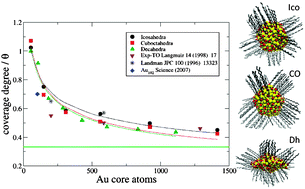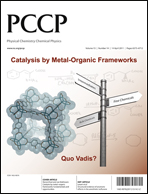Development of a semiempirical potential for simulations of thiol–gold interfaces. Application to thiol-protected gold nanoparticles†
Abstract
A new semiempirical potential, based on density functional calculations and a bond-order Morse-like potential, is developed to simulate the adsorption behavior of thiolate molecules on non-planar gold surfaces, including relaxing effects, in a more realistic way. The potential functions include as variables the metal–molecule separation, vibrational frequencies, bending and torsion angles between several pairs of atom types and the coordination number of both the metal (Au) and thiolate groups. The potential was parameterized based on a set of density functional calculations of molecular


 Please wait while we load your content...
Please wait while we load your content...